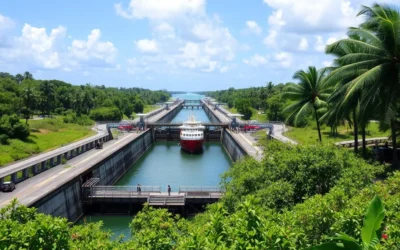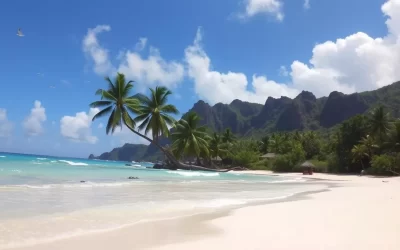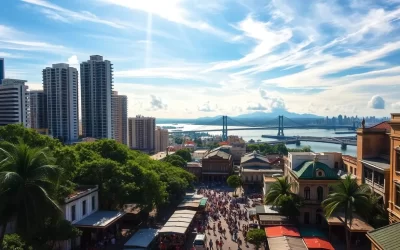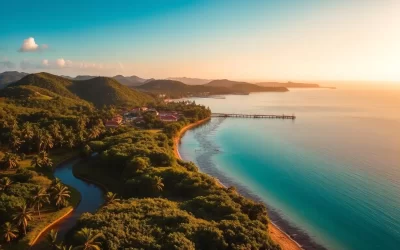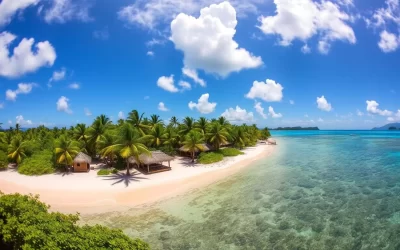✓ Accommodations✓ Flights✓ Rental Cars✓ Tours & Activities ✓ Tours & Activities
When you think of Panama, the Panama Canal might come to mind. But did you know the language spoken here is just as fascinating? Spanish is the official language, used by nearly 4 million people. This makes it the dominant language in the country.
Panamanian Spanish has its unique flavor. It differs in pronunciation and vocabulary from the Spanish spoken in Spain. For example, certain words and phrases are distinct to this region. This dialect reflects the rich culture and history of the area.
English also plays a role, especially in Panama City. Around 14% of the population uses it as a second language. This is particularly true in business settings, where bilingual skills are highly valued. The blend of languages adds to the vibrant atmosphere of the capital.
Overview of Panama’s Linguistic Landscape
Language in this region tells a story of history, migration, and identity. Over time, interactions between indigenous groups and European settlers have shaped the way people communicate today. This blend of influences has created a vibrant linguistic culture that reflects the nation’s past and present.
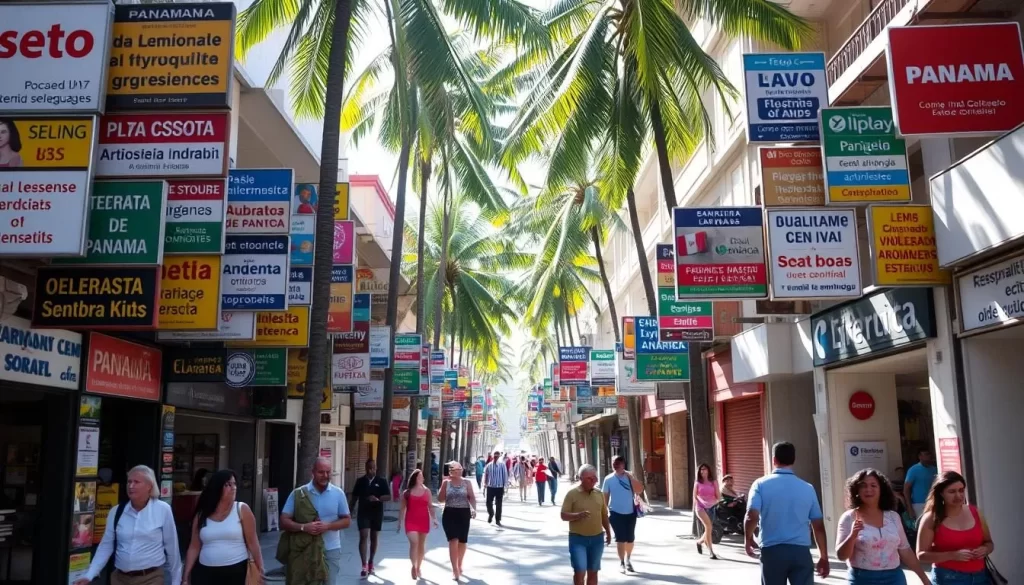
Historical Background of Panama’s Languages
The roots of this country’s language practices go back centuries. Indigenous communities, such as the Ngäbe, have preserved their native tongues despite colonial pressures. Spanish, introduced by settlers, became the dominant language, but regional dialects still carry traces of indigenous words and phrases.
For example, the Ngäbere language remains widely spoken among the Ngäbe-Buglé group. This persistence highlights the resilience of native cultures in the face of change.
Cultural Influences on Language Development
Cultural exchanges have played a key role in shaping the linguistic landscape. The arrival of European settlers brought new words and expressions, while indigenous traditions added depth to the dialect. Over time, these interactions created a unique blend of language that varies by region.
In urban areas, Spanish integrates elements from English and other languages, reflecting the dynamic nature of modern communication. Meanwhile, rural communities maintain traditional speech patterns, preserving a connection to their home and heritage.
Panama: Official and widely spoken languages
Communication here reflects a blend of traditions and modern influences. The way people speak tells a story of resilience and adaptation, shaped by history and culture. This section explores the evolution of panamanian spanish and the role of English in business and education.
Evolution of Panamanian Spanish
Panamanian spanish has developed unique characteristics over time. Influenced by Caribbean coastal regions, it shares similarities with dialects from Cuba and the Dominican Republic. For example, the aspiration of the final “s” and a rapid speaking pace are common features.
Historical factors also play a role. The US presence during the canal era introduced English words and phrases into everyday speech. This blend of influences creates a dynamic language that varies by region.
“The way we speak reflects our history and the people we’ve met along the way.”
Role of English in Business and Education
English is widely used in business and educational settings, especially in panama city. Around 14% of the population speaks it as a second language. This bilingualism enhances professional environments and fosters cultural exchange.
In the Canal Zone, English remains prevalent due to historical ties. Schools and corporations often prioritize bilingual skills, making it a valuable asset for speakers in this region.
| Language Feature | Panamanian Spanish | Other Dialects |
|---|---|---|
| Final “s” Aspiration | Common | Rare |
| Speaking Pace | Rapid | Moderate |
| English Influence | High | Low |
Understanding these linguistic dynamics helps you appreciate the rich cultural tapestry of this country. Whether you’re exploring panama city or the Canal Zone, the blend of language adds depth to your experience.
Indigenous and Immigrant Languages in Panama
The linguistic diversity in this region reflects centuries of cultural exchange and adaptation. From native tongues to languages brought by immigrants, the language landscape here is rich and varied. This section explores the native dialects of indigenous groups and the immigrant phrases that have shaped the culture.
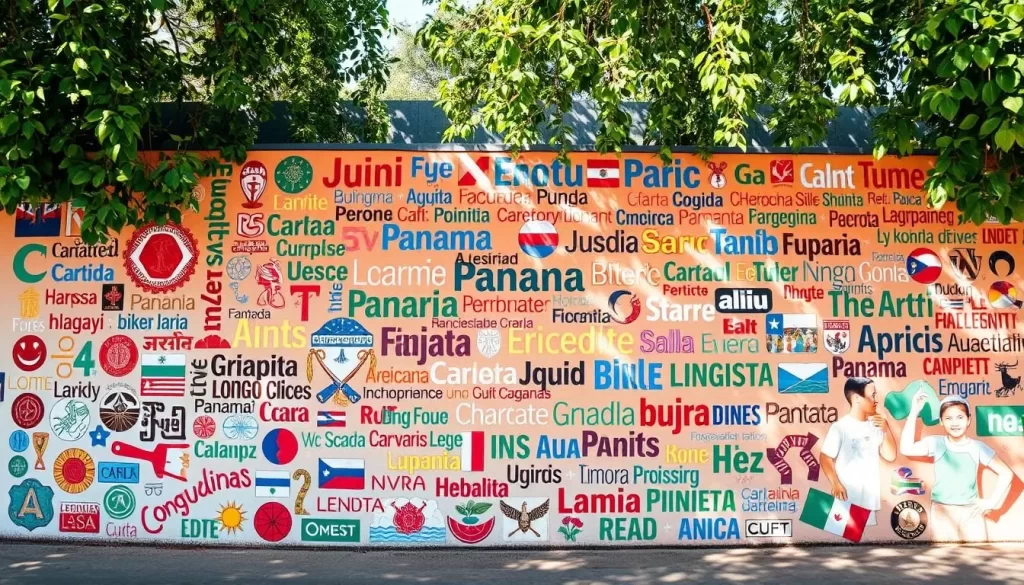
Native Languages and Their Communities
Indigenous groups like the Ngäbe and Kuna have preserved their native tongues despite external influences. For example, the Ngäbere language is still widely spoken in the Comarca Ngäbe-Buglé area. This persistence highlights the resilience of these communities.
In Bocas del Toro, the Buglere language is another example of cultural preservation. These native dialects are not just a means of communication but a way to maintain identity and heritage.
Languages Introduced by Immigrants
Immigrant communities have also contributed to the linguistic tapestry. Chinese, Arabic, and Korean are among the languages introduced by settlers. These phrases are often preserved within specific groups, adding to the region’s diversity.
For example, the Chinese community in urban areas has maintained its language while integrating into the broader culture. This blend of traditions enriches the local home environment.
“Language is the roadmap of a culture. It tells you where its people come from and where they are going.”
| Language Type | Example | Region |
|---|---|---|
| Indigenous | Ngäbere | Comarca Ngäbe-Buglé |
| Immigrant | Chinese | Urban Areas |
| Indigenous | Buglere | Bocas del Toro |
| Immigrant | Arabic | Panama City |
Understanding this linguistic diversity helps you appreciate the rich cultural tapestry of the region. Whether you’re exploring Bocas del Toro or urban centers, the blend of language adds depth to your experience.
Regional Dialects, Slang, and Linguistic Variations
Exploring the linguistic landscape of this region reveals a fascinating mix of dialects and slang. Each area has its unique way of expression, shaped by history, culture, and interactions. From urban centers to rural towns, the language adapts to reflect local identity.
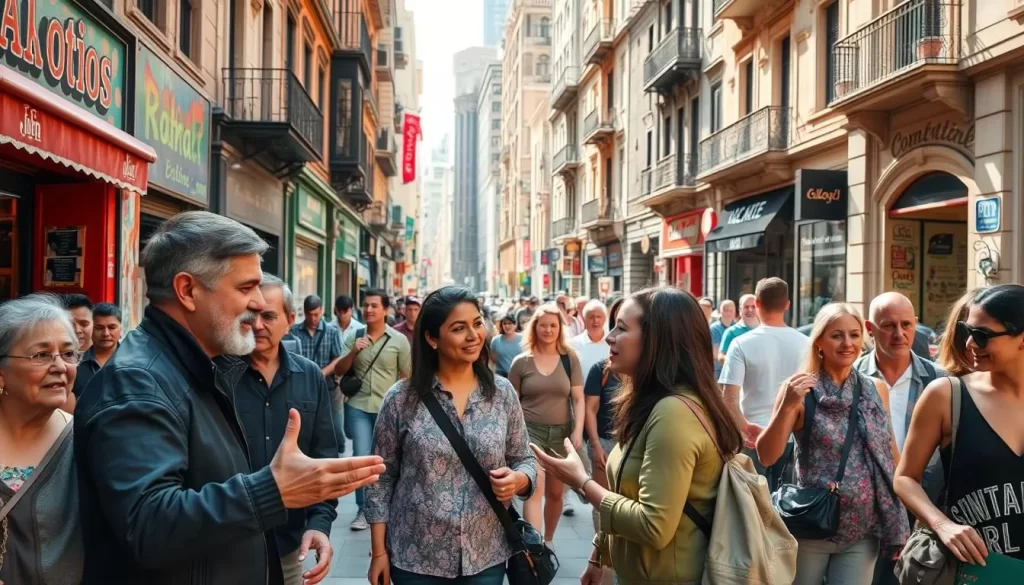
Distinctive Regional Dialects
In this country, regional dialects vary significantly. For example, the way people speak in Panama City differs from the Bocas del Toro region. Urban areas often blend Spanish with English, while rural communities preserve traditional speech patterns.
Slang also plays a big role. Words like “chévere” (cool) and “pana” (friend) are common in casual conversations. These expressions add flavor to the dialect and make it unique to this region.
Impact of Expat and Local Interactions
Expat communities have influenced the language in significant ways. English phrases often mix with Spanish, especially in Panama City. This blend creates a dynamic way of communication that reflects the area’s diversity.
Local interactions also shape the dialect. Over time, new words and phrases emerge, reflecting the evolving culture. For instance, expressions from the Bocas del Toro area highlight the region’s Caribbean influence.
| Region | Dialect Feature | Example |
|---|---|---|
| Panama City | English-Spanish Blend | “Voy al mall” (I’m going to the mall) |
| Bocas del Toro | Caribbean Influence | “Qué xopá?” (What’s up?) |
| Rural Areas | Traditional Speech | “Pura vida” (Pure life) |
Understanding these variations helps you appreciate the rich linguistic tapestry of this country. Whether you’re in Panama City or exploring the Bocas del Toro region, the unique dialects and slang add depth to your experience. For more on Panamanian slang, check out this guide.
Language and Culture: Beyond Communication
Language in this country goes beyond words—it’s a reflection of identity, culture, and history. It shapes how people connect, celebrate, and express their heritage. From the bustling streets of Panama City to the serene San Blas islands, language tells a story of resilience and unity.

Language’s Role in Shaping Panamanian Identity
Panamanian spanish is more than a way to communicate. It’s a core part of national identity, uniting people across regions. In urban areas like Panama City, Spanish blends with English, reflecting the population’s diversity. This mix creates a dynamic linguistic culture that adapts to modern life.
In rural areas, traditional speech patterns preserve a connection to heritage. For example, the San Blas region uses Kuna, an indigenous language, to maintain cultural identity. These regional variations highlight the rich tapestry of the country’s linguistic landscape.
Language also influences daily interactions. Phrases and slang, like “chévere” (cool) or “pana” (friend), add a unique flavor to conversations. These expressions reflect the way people connect and celebrate their culture.
| Region | Language Feature | Cultural Impact |
|---|---|---|
| Panama City | Spanish-English Blend | Reflects urban diversity |
| San Blas | Kuna Language | Preserves indigenous heritage |
| Rural Areas | Traditional Spanish | Maintains cultural roots |
Understanding these dynamics helps you appreciate the language’s role in shaping identity. Whether you’re exploring the Panama Canal or interacting with locals, language offers a window into the country’s soul. For more on the evolution of Spanish, check out this resource.
Language also reflects societal values. Bilingual education programs, for instance, promote cultural exchange and preserve indigenous tongues. These efforts ensure that every speaker contributes to the way identity is formed and celebrated.
From traditional phrases to modern slang, language is a living part of the country’s culture. It’s a reminder of the past and a bridge to the future.
Conclusion
The way people communicate here reveals a vibrant cultural mosaic. Spanish dominates, spoken by nearly 90% of the population, while indigenous languages and English add depth to the linguistic landscape. This blend reflects the region’s rich history and modern influences.
In areas like Bocas del Toro and San Blas, unique dialects and expressions highlight local identity. These variations show how language adapts to the way people live and connect. From urban centers to rural communities, every person contributes to this dynamic tapestry.
Understanding this diversity helps you appreciate the cultural richness of the area. Whether you’re exploring the Panama Canal or interacting with locals, language offers a window into the region’s soul. For more insights, check out this guide.
The above is subject to change.
Check back often to TRAVEL.COM for the latest travel tips and deals.

